 MyDogBreeds
MyDogBreeds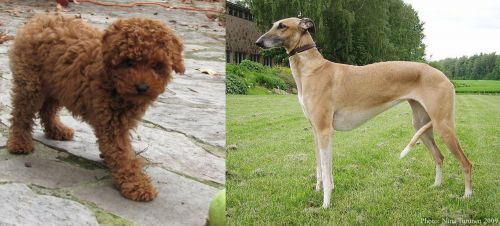 Toy Poodle is originated from France but Hortaya Borzaya is originated from Russia. Toy Poodle may grow 47 cm / 18 inches shorter than Hortaya Borzaya. Toy Poodle may weigh 30 kg / 66 pounds lesser than Hortaya Borzaya. Both Toy Poodle and Hortaya Borzaya has same life span. Toy Poodle may have less litter size than Hortaya Borzaya. Toy Poodle requires Moderate maintenance. But Hortaya Borzaya requires Low maintenance
Toy Poodle is originated from France but Hortaya Borzaya is originated from Russia. Toy Poodle may grow 47 cm / 18 inches shorter than Hortaya Borzaya. Toy Poodle may weigh 30 kg / 66 pounds lesser than Hortaya Borzaya. Both Toy Poodle and Hortaya Borzaya has same life span. Toy Poodle may have less litter size than Hortaya Borzaya. Toy Poodle requires Moderate maintenance. But Hortaya Borzaya requires Low maintenance
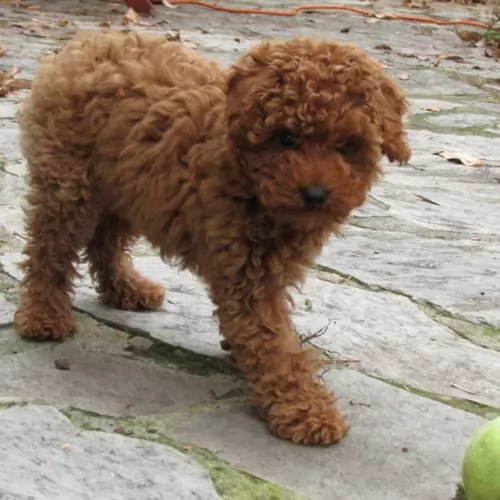 More and more people are opting not to clip their Poodles ith those ridiculous hair cuts with pom poms. Clipped properly, he can be just as cute as any other dog.
More and more people are opting not to clip their Poodles ith those ridiculous hair cuts with pom poms. Clipped properly, he can be just as cute as any other dog.
It is thought that the Toy Poodle hails from France, with the standard poodle having originated in Germany. The first poodles were used as herders so they’re not just useless dogs with silly pom-pom haircuts.
Some rough-coated water dogs are believed to be ancestors of the Poodle. It was in the 19th century that these dogs became show dogs. Their popularity died out in the 1920s, but it has once again become a popular dog.
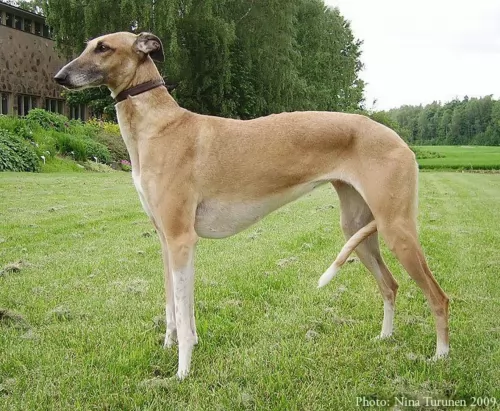 The Hortaya Borzaya is an ancient sighthound from Asia with its origins in Kievan Rus = Grand Duchy of Lithuania = Polish-Lithuanian Commonwealth and the Empire of Russia. The Hortaya is a large dog, especially a long in body dog with a muscular build suitable for running fast. He is one of the most talented of sighthounds, able to track moving prey at quite great distances. He is an intensely active when running prey and quiet and well balanced when not working.
The Hortaya Borzaya is an ancient sighthound from Asia with its origins in Kievan Rus = Grand Duchy of Lithuania = Polish-Lithuanian Commonwealth and the Empire of Russia. The Hortaya is a large dog, especially a long in body dog with a muscular build suitable for running fast. He is one of the most talented of sighthounds, able to track moving prey at quite great distances. He is an intensely active when running prey and quiet and well balanced when not working.
In Asia and Russia, it is still a working hunting dog, hunting a variety of game such as Saiga antelopes, wolves, foxes, and hares. With tremendous endurance, the Hortaya can run at great speeds and great distances on the hunt. The Hortaya Borzaya is a long distance runner rather than a sprinter like the greyhound we are all so familiar with. He also needs very little rest between runs of up to 4 km. The Hortaya uses his sense of smell as well as sight in the hunt. They hunt solo, in pairs or in packs.
It was not until 2004 that the Hortaya was first exported to Europe and given full breeding papers. They went to Germany, Slovakia and the Czech Republic in 2004. They went to Switzerland and Finland in 2005 and to the United States around 2005. Prior to this the Hortaya Borzaya was bred only in its original territory for thousands of years.
Unlike Western breeding programs, the Hortaya is not bred for the purpose of improving the breed. Like Asian thoroughbred horses the breed is considered “finished”. Because of this there was no inbreeding, linebreeding or incest. This is true for about 4-6 generations of a line. This helps the breed to stay healthy.
The breed was developed centuries ago being bred by many different groups of people throughout the region, making it impossible to say exactly where and how this Central Asian/Afghanistan/ southern Russian breed developed. The Russian Kynological Federation (RKF) member of the FCI, developed a standard for the Hortaya Borzaya, which unlike most breed standards, does not tell you what the Hortaya must be like. Instead it tells you what he cannot be.
It gives boundaries that the dog must fit inside in order to be considered a Hortaya Borzaya. This is because the breeds of these dogs in their native territories want to preserve as many different types and sub-types as possible under the banner of one breed. To most people these dogs would look like very different breeds. For this reason, they have not been accepted into International Breed Groups and Associations. The breeders of these dogs do not want to be tied down to one standard. They do not want the breed to be separated into western lines and the original line or show lines and working lines. They wish to keep all the dogs within one grouping.
The breed is recognized on the national level by the originating countries and federations, including Russia’s. There are an estimated 2500-3500 dog of this breed in existence to day. Only a few dozen of the breed exist outside of the original countries. In other Eastern and European countries, the dogs may be registered with hunting associations instead of a breed association.
The breed is held mostly by hunters in remote, local areas and villages that are fairly isolated. Here the Hortaya is seen as a partner in feeding the hunters family and the dog is invaluable. In these remote areas a good hunting dog is equal in value to the good horse. Both are essential to the hunter and his family’s livelihood.
The Hortaya Borzaya is a pack dog and does well with the family as well as an athletic hunter. They hunt in packs, small groups or alone and bring their catch back to the hunter for the family meal. No hunter had to go with the dog. In fact, the hunters would send the dogs several times for food. The Hortaya might travel for miles across tough terrain to get food for the family.
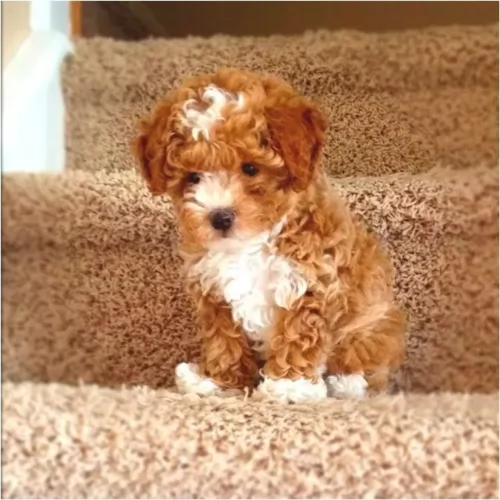 Toy Poodles stand between 24 to 28 cm in height and weigh in the region of 2 to 5kg. Poodles are light-shedding dogs and are thought to be hypo-allergenic. If you have an allergy, a Toy Poodle can e a great dog for you.
Toy Poodles stand between 24 to 28 cm in height and weigh in the region of 2 to 5kg. Poodles are light-shedding dogs and are thought to be hypo-allergenic. If you have an allergy, a Toy Poodle can e a great dog for you.
The crip, curly coat comes in a number of colors – cream, apricot, brown, chocolate, and black and he can be clipped if you find that he is too high maintenance. If the hair is allowed to grow it can become very matted and turn into dreadlocks.
Many Toy Poodle owners find this very difficult to maintain and opt to have the dog’s hair clipped. The poodle has medium-length floppy ears. Docking of the tail is important if you want to keep the distinctive look of your poodle. Fortunately, docking is still permitted in the USA and this is best done when the puppy is very young.
Toy Poodles are intelligent dogs and are capable of learning a whole lot of commands and tricks. They’re also excellent athletes, being lively and energetic.
Being lively and alert, the Toy Poodle can be a good watchdog too, barking sharply at intruders. The Toy Poodle is very social and won’t take kindly to being left alone for hours.
Then again, he is gentle and sensitive and won’t do well with undisciplined children and their shrill screams. They are definitely dogs that want peace and harmony. And having him trained and socialized will get you a well mannered, obedient dog. He is small enough to adapt to life in the city or the countryside.
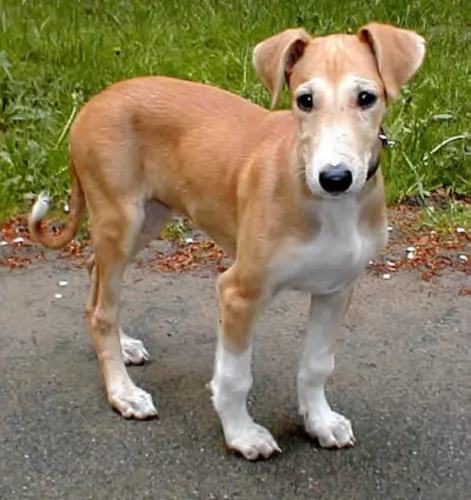 This athletic sighthound is a handsome dog, ranging from large to giant. Remember there are many different ‘types’ of dogs within the one line/breed of Hortaya. Breed standards are exclusionary, and performance based rather than inclusionary, and appearance based. Still most of the breed lines share many of the same traits.
This athletic sighthound is a handsome dog, ranging from large to giant. Remember there are many different ‘types’ of dogs within the one line/breed of Hortaya. Breed standards are exclusionary, and performance based rather than inclusionary, and appearance based. Still most of the breed lines share many of the same traits.
They are a long legged breed with a very deep chest and flexible spine. They have immensely strong lungs and a narrow but long skull. Their gait is fluid, effortless trotting when not hunting. When she is hunting, they gallop like a horse and cover a lot of ground.
There eyes are usually black but can be any color and their fur is also any color. It is thick and dense. Finally, in the 2000’s, there were some dogs in a subline exported to Europe and to North America. Here, for this subgroup, a standard was established based on appearance and the color or the coat was now set at only white, blue, black, cream, red, sable and brindle, and piebald. They might or might not have a saddle. Definition of this type is still going on and has not been entirely settled yet. This standard is only for the European and American market show dogs.
These dogs, bred for show, have the same ability to run like the wind and for a very long time with his muscled body and long legs. The breed has strength and stamina that will fool you. He also has a long neck and broad back. He has thin, short ears.
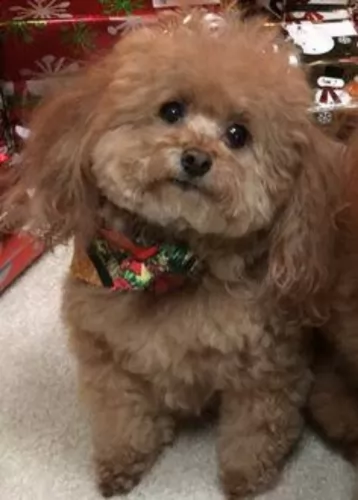 This dog breed is very loyal to its family. It doesn't do well when left for hours on its own.
This dog breed is very loyal to its family. It doesn't do well when left for hours on its own.
Energetic and lively, you’ll find your Toy Poodle such a pleasure to have around. He is very intelligent too, so with training and socialization he becomes a super little pet.
Playful and social, he is like a small ray of sunshine that comes into your home and your heart.
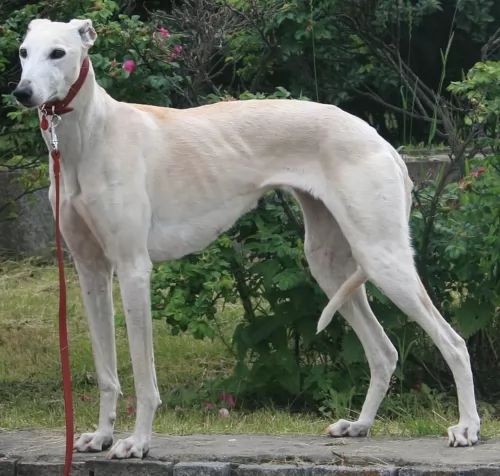 Children friendliness - yes, they are very good with children and will play with them for hours.
Children friendliness - yes, they are very good with children and will play with them for hours.
They have tremendous stamina, speed and intelligence to hunt on their own without the hunter and bring the prey back in good shape for the hunter’s family to eat.
No they are not very adaptable in terms of living arrangements. They will not do well in an apartment and probably not in the city as they need land to run.
Learning ability yes, they are intelligent and learn easily.
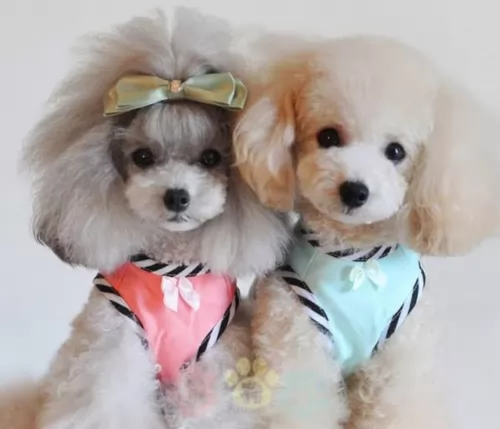 Good food and exercise keep the Toy Poodle as healthy as possible, but like other dogs, the Toy Poodle can also get sick. Cancer, bloat, ear infections, and obesity are common dog ailments.
Good food and exercise keep the Toy Poodle as healthy as possible, but like other dogs, the Toy Poodle can also get sick. Cancer, bloat, ear infections, and obesity are common dog ailments.
Too many dog owners don’t realize the importance of healthy teeth. You need to look into the mouth of your pet regularly to make sure there are no rotting teeth. These problematic teeth can jeopardize the health of your pet.
Infection of teeth and gums can cause a host of other problems such as kidney and heart disease.
Check your Toy Poodle for parasites – fleas, ticks, worms as these can take a toll on your pet’s health. Your pet can become lethargic and the coat becomes listless, thin and dull. Your pet will also lose weight. Speak to your vet about treatments that can prevent these infestations.
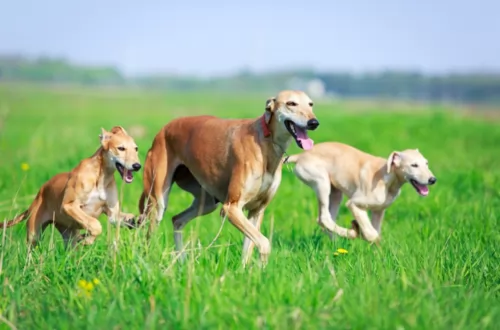 As previously mentioned, the original breed is isolated and therefore has a pretty good health track record. Most of the breed specific illnesses or conditions that usually are inherited barely exist in this breed.
As previously mentioned, the original breed is isolated and therefore has a pretty good health track record. Most of the breed specific illnesses or conditions that usually are inherited barely exist in this breed.
They have a propensity toward obesity and diet is essential to prevent other issues.
Chronic or acute pancreatitis is possible because the breed developed eating small meals and hardly any meat. Too much meat or fat could cause this.
No tolerance for high protein dog food. Can cause puppies to have life threatening damage to bones and cartilage that is irreversible.
Bloat – because of the deep chest and the intolerance for large meals they are prone to bloat.
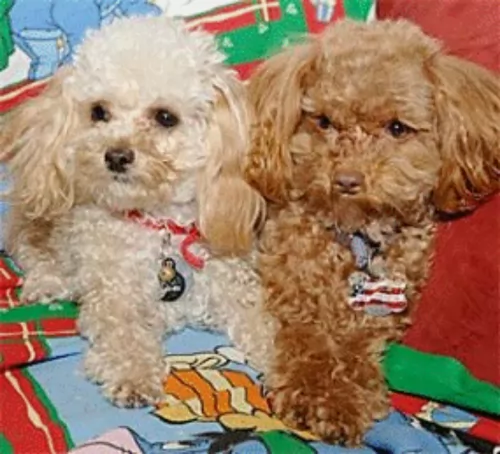 Make sure to exercise your Toy Poodle every day. If you’re lucky to have a garden, play ball games with him, play hide and seek and take him for walks.
Make sure to exercise your Toy Poodle every day. If you’re lucky to have a garden, play ball games with him, play hide and seek and take him for walks.
Brush your Toy Poodle twice a week. His curly coat can become a source of concern for you and then you can have his coat clipped short.
Provide your pet with training and socialization and get him used to walking on a leash.
Take your Toy Poodle for regular visits to the vet. There are some serious canine diseases that can kill your pet.
Provide your pet with a nice dry, peaceful sleeping area. He needs his own water and food bowls. Wash these regularly.
Provide your Toy Poodle with the best dog food there is. Try and go for natural foods free from colorants and fillers. Try and also give him some home-made food such as boiled chicken, brown rice, sweet potatoes, and spinach. Dogs like the same good foods which are simple and nutritious.
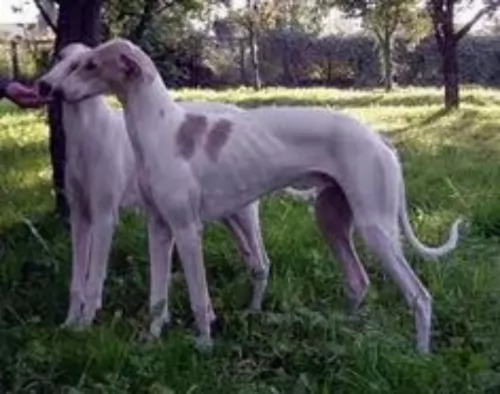 As mentioned above do not overfeed a Hortaya Borzaya puppy. There is serious risk of irreversible damage if you do. Feed small meals 3-6 times a day with lower protein.
As mentioned above do not overfeed a Hortaya Borzaya puppy. There is serious risk of irreversible damage if you do. Feed small meals 3-6 times a day with lower protein.
3 cups of an average protein high quality dog food served at least 3-4 times per day. To avoid bloat do not feed large meals before or after exercise and don’t let your dog drink a lot of water at one time.
This is an extremely active dog bred to hunt 5-6 times a day over wide expanses of various and rough terrain. They need exercise. If you run, they will run with you happily and they will outlast you. They are good at and enjoy fetch, chase, agility, and field trials. They will last hours at any game they play.